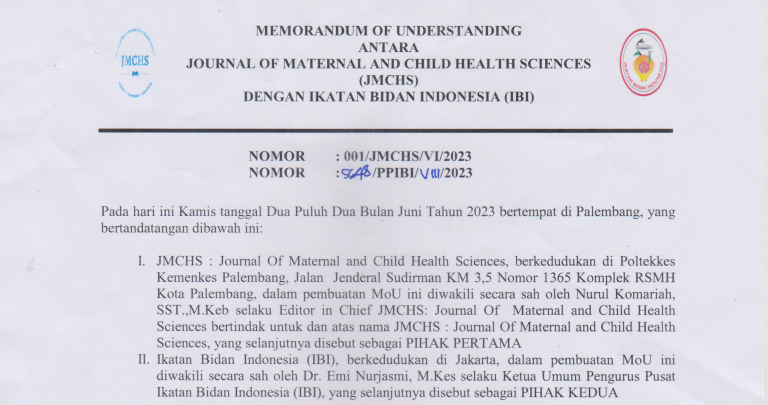The Effect of Pelvic Rocking Exercise on Primary Dysmenorrhea in Teenage Girls at Sma Islam Al-Amalul Khair Palembang
Abstract
Background : Menstrual pain or commonly called dysmenorrhea. Dysmenorrhea is pain in the lower abdomen that can radiate to the lower back and upper thighs. In Indonesia, the incidence of dysmenorrhea is 107,673 people (62.25%), consisting of 59,671 people (54.89%) experiencing primary dysmenorrhea and 9,496 people (9.36%) experiencing secondary dysmenorrhea. Handling dysmenorrhea can be handled with various alternatives, one of which is pelvic rocking exercise. Purpose : To determine the effect of pelvic rocking exercise on primary dysmenorrhea in teenage girls at SMA Islam Al-Amalul Khair Palembang in 2021. Methods : This study is a quantitative study using a pre-experimental design with a one group pretest-posttest design approach. The population in this study were all teenage girls in grades X, XI, and XII who experienced dysmenorrhea. The sample with 33 respondents. The analysis used is the Wilcoxon test. Results : It is known that from 33 respondents, before the intervention, 18 respondents (54.5%) had moderate pain and 15 respondents (45.5%) had mild pain. After the intervention, there were 2 respondents (6.1%) moderate, 25 respondents (75.8) mild pain, and 6 respondents (6.1%) had no pain. The results of the Wilcoxon test obtained a p-value of 0.000 (p <0.05), which means that there is an influence before and after being given pelvic rocking exercise on dysmenorrhea in teenage girls. Conclusion : There is an effect of pelvic rocking exercise on primary dysmenorrhea in teenage girls at SMA Islam Al-Amalul Khair Palembang.
Authors who publish with this journal agree to the following terms:
- Authors retain copyright and grant the journal right of first publication with the work simultaneously licensed under a Creative Commons Attribution License that allows others to share the work with an acknowledgement of the work's authorship and initial publication in this journal.
- Authors are able to enter into separate, additional contractual arrangements for the non-exclusive distribution of the journal's published version of the work (e.g., post it to an institutional repository or publish it in a book), with an acknowledgement of its initial publication in this journal.
- Authors are permitted and encouraged to post their work online (e.g., in institutional repositories or on their website) prior to and during the submission process, as it can lead to productive exchanges, as well as earlier and greater citation of published work












